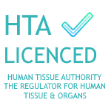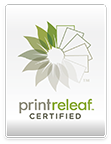
As a parent, you’re probably well-versed in the ins and outs of caring for your little one. But when it comes to allergies, it can be difficult to know what symptoms to look out for. Cow’s Milk Protein Allergy (CMPA), soy allergy and egg allergy are three of the most common allergies affecting babies. We’ve explored what the different types of allergies are, some symptoms to watch out for, and how you can access support if you suspect your baby has an allergy.
Most common allergies in babies
Cow’s Milk Protein Allergy (CMPA)
CMPA is one of the most common food allergies in infants, with around 2–7% of babies suffering from some form of reaction. Symptoms can range from mild skin reactions like eczema, itching or hives, to more severe reactions such as vomiting, diarrhoea, wheezing or difficulty breathing.
Soy Allergy
Soy allergy is also relatively common in babies but slightly less prevalent than CMPA — approximately 1–2% of children are affected by it. While many parents opt to switch their child onto soy formula if they suspect CMPA, this may not be a suitable solution if your baby has a soy allergy as well. Symptoms may include mild skin rashes or hives, vomiting or diarrhoea, coughing or wheezing.
Egg Allergy
Egg allergy affects around 1–2% of young babies and children under five years old too. Common symptoms include skin reactions such as rashes or hives, stomach upset including vomiting and diarrhoea, coughing or wheezing, sneezing, watery eyes, swelling around the mouth, anaphylaxis, or even just a runny nose with no other visible symptoms.
Different types of allergies
One thing that many parents of babies with suspected allergies quickly realise is that it can be very tricky to pinpoint symptoms, particularly if their child is suffering with a delayed reaction or if they’re breastfed.
There are in fact two different types of allergic reactions — IgE, which is an immediate reaction where histamine is released into the body, and non-IgE — mediated, also known as a delayed reaction.
The most common symptoms of an immediate food allergy tend to be skin reactions such as a rash or hives, swelling of the mouth, tongue, throat or other areas of the body that the food has touched, wheezing, dizziness, abdominal pain, diarrhoea and sickness. More extreme IgE reactions can result in anaphylaxis which may be life threatening.
The symptoms of a delayed food allergy in babies are often not as obvious as they can occur hours to days later. These can also include rashes, atopic eczema, diarrhoea, sickness and abdominal pain. In babies specifically, this can present as colic — excessive and inconsolable crying — and reflux.
How to get help
If you think that your baby is suffering from a food allergy, it’s important to get in touch with your GP who can give you advice and refer you to the correct medical professional. It may be that no further action is needed immediately other than cutting out the food, but they may also refer you to a dietitian or nutritionist who can support you. You may be referred to a clinic at your local hospital as an outpatient, and at this stage it may simply be a phone or video call to discuss what you already know about your baby’s potential allergy before moving to the next steps.
The best first step you can take while waiting to see your GP or other medical professional is to start a food and symptom diary for your baby if they are older than 6 months, or for yourself if you are breastfeeding your baby and suspect a food allergy. If you suspect a specific food allergy based on reactions, try eliminating that food and watching for improvements in symptoms. That way you can begin the process of narrowing down the possibilities and move forward on what can be done.
Allergy Testing in Babies
Most babies with CMPA will not need to have allergy testing as it becomes obvious once the allergen is cut out of their diet. However your dietitian may ask you to eliminate other foods if the symptoms persevere as it may not be the only allergy.
If this is the case, you may be referred for allergy testing, especially if the reaction is immediate. This may mean a skin prick test where they will monitor your baby’s skin for a reaction or blood testing.
Allergies & Breastfeeding
Allergies in breastfed babies are generally less obvious as they happen as a result of the allergen transferring into their mother’s milk. If you are exclusively feeding your baby breastmilk, you will need to keep a record of your own food and the baby’s symptoms to pinpoint what may be causing them. It may be that you will need to eliminate certain foods to determine the baby’s allergy.
Once the baby is weaning, you will need to ensure that your baby avoids the allergen in their foods and you will need to continue to avoid them in your diet too while they’re still having your milk.
Allergies & Formula
If your baby has CMPA or a soy allergy and is formula fed, you will need to find a suitable formula alternative for them. The name Cow’s Milk Protein Allergy is misleading as generally other animal milks can cause the same reaction, so a goat’s milk formula will likely not work for them. Your GP or dietitian will be able to recommend and prescribe a hypoallergenic formula to suit your baby to manage their allergy.
Weaning — where to begin?
When you begin weaning your baby, it’s important to take careful note of the foods they’re eating that may contain allergens. The best way to introduce foods to babies with a diagnosed or suspected allergy, or those with a family history of allergies, is one at a time over a period of time so that you can watch for symptoms emerging and not be confused if multiple allergens may have caused it.
You may need to speak to a dietitian or nutritionist to ensure that your baby is getting all the nutrients they need. They will be able to provide suggestions on alternatives for babies who need to avoid specific foods — for example, if your baby needs to avoid milk, you will need to offer them calcium-enriched foods and foods with healthy fats elsewhere in their diet, such as avocado or adding olive oil to mashed potatoes.
In the UK, allergens should always be clearly labelled on food and should be easy to spot as they are written in a bold font. If you are travelling with your baby, ensure that you know the name for the allergens in the country you are travelling in and are aware of how allergens may or may not be labelled on the packaging. When eating out, whether at home or abroad, it’s always best to double check with your server or a manager about allergens. They may be able to prepare a dish differently or separately for you or your baby.
If your baby attends nursery or another childcare setting, you’ll want to make sure that they have been properly informed of their allergy. You may also want to know about their guidelines for children with allergies — for example, they may need to feed them in a separate area to the other children to avoid cross-contamination or provide them with different meals and snacks.
How to alleviate symptoms
For many babies, cutting out the allergen from your or their diet should stop symptoms quickly, although for babies with delayed reactions, it may take a couple of weeks for the allergen to completely leave their system and for symptoms to disappear.
If your baby is suffering from an immediate reaction, a medical professional may prescribe an anti-histamine for them. It is important to speak to a professional before administering this though. For babies who suffer with delayed skin reactions such as eczema, a mild baby lotion may help with itching and dryness, or a doctor can prescribe other treatments if the symptoms persist or are more severe.
Allergy Ladders
It can be reassuring to know that as they grow, many babies outgrow their allergies, especially CMPA. Your medical professional will be able to guide you through navigating this tricky time with an allergy ladder such as the milk ladder or egg ladder. This is a way of slowly introducing the allergen at a certain time step by step so that you will be able to know if and how much of the allergen your baby is able to tolerate.
Some allergens may need to be reintroduced under medical supervision depending on the type of allergen and the reaction, so you may be asked to come into a ward for this.
Conclusion
Allergies in babies can be scary if you’re a parent experiencing them for the first or thirtieth time. The important thing to remember is that there are plenty of medical professionals who can assist you and that there are a lot of alternatives easily available now for your baby. If you’re unsure, always get in touch with your GP who will be able to guide you towards the right support.
Where to find help
https://www.nhs.uk/start4life/weaning/safe-weaning/food-allergies/



